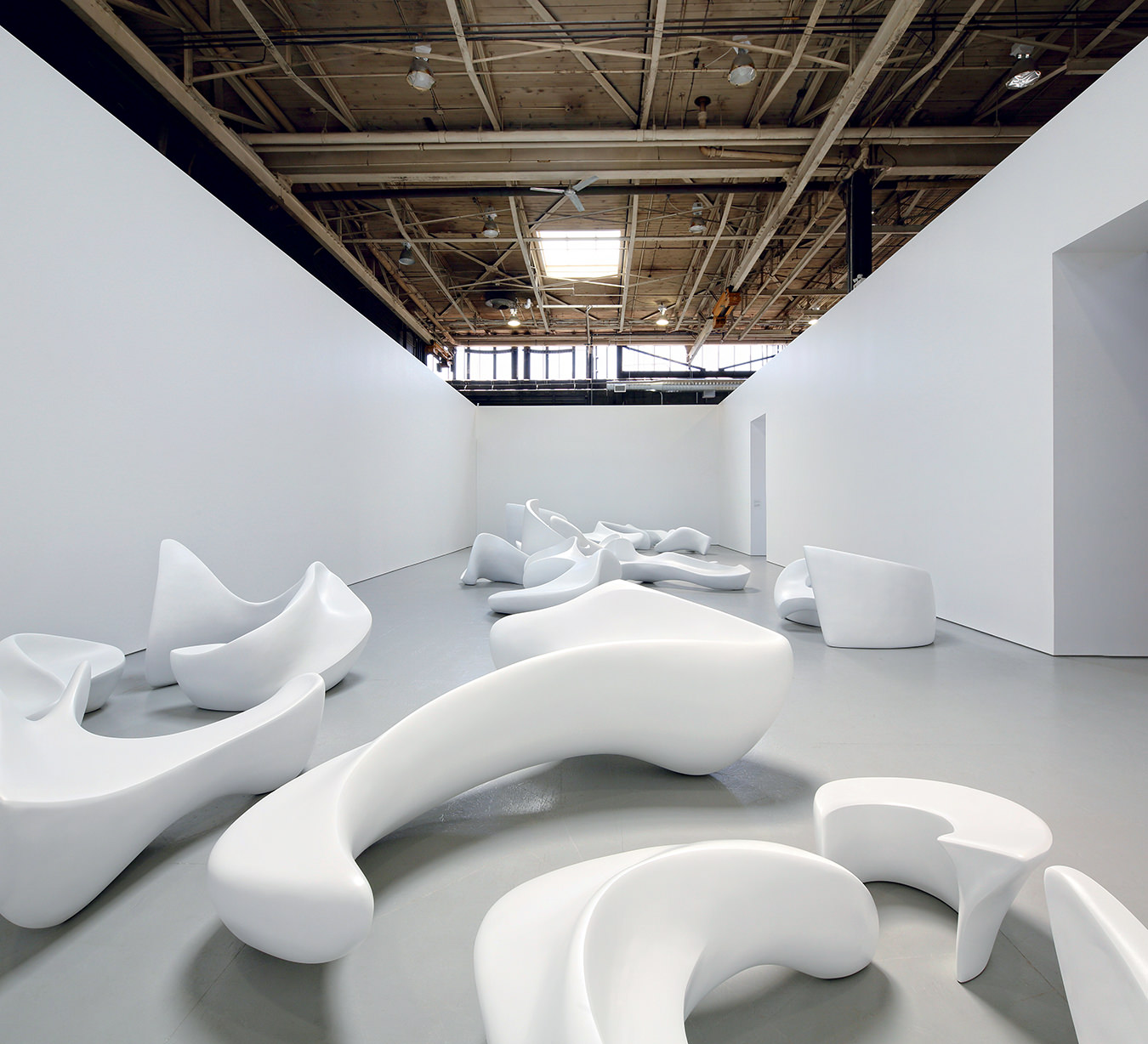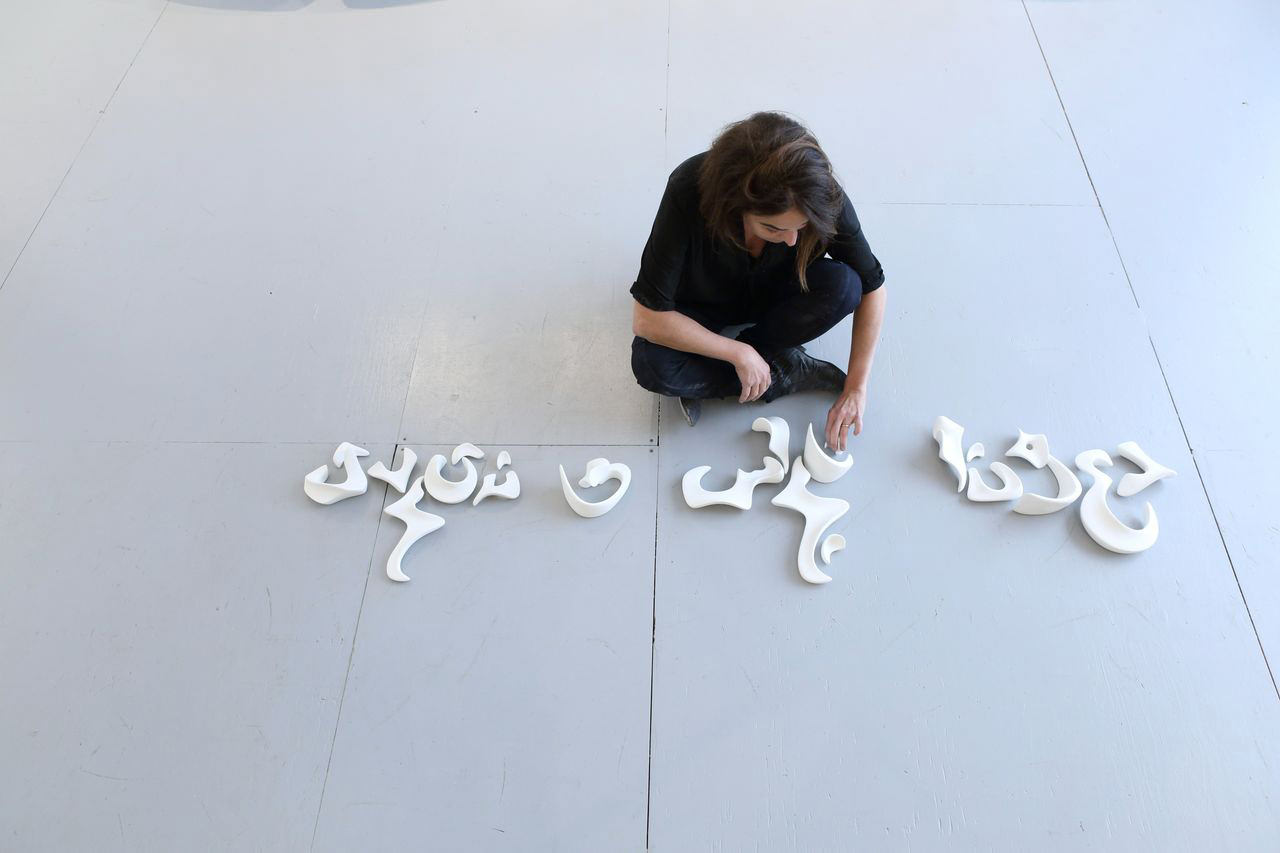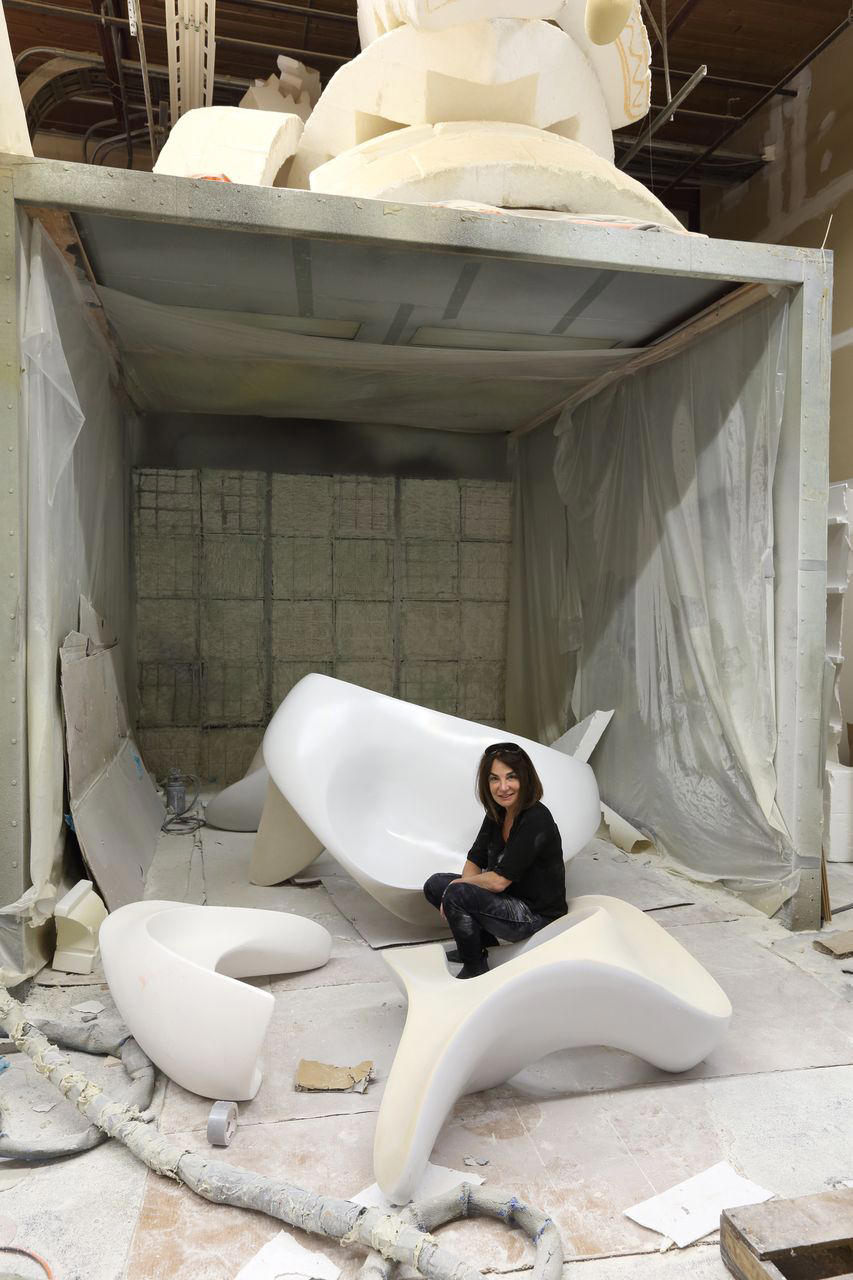Marie Khouri definitely has a way with words; after all, it demands a unique eloquence to be able to craft a sentence so emphatic, so articulate, and so artistic that it takes up a full 75 feet of floor space. Let’s Sit and Talk is a massive sculptural masterwork, and involves 21 individual figures which, at first glance, appear to be abstract statues, though they also serve as a seating arrangement. When viewed from above, this majestic sculpture reads “daouna najlous wa natahadas”—literally, “let’s sit and talk” in Arabic; the cursive curvature of the alphabet lends itself ideally to this lively installation. Suffice to say that Khouri’s work, which is already renowned around the world, has achieved not just new heights, but widths, breadths, and depths.
“I have often worked with seating,” says Khouri, referencing her public installation Le banc at the Olympic Village SkyTrain Station. “The City wanted me to do a sculpture, but I find that in Vancouver there aren’t enough seating elements in areas. And coming from Europe, it was something that, to me, is so important for the community.” To Khouri, art should not be isolated from the ordinary lives of ordinary people; on the contrary, it is an integral part of identities, communities, and societies, and should therefore occupy spaces where it can be seen and, in the case of her sculptures, touched. “I feel that the passersby add an element of life to a sculpture,” explains Khouri. “They basically bring it to life.”
Let’s Sit and Talk premiered at Equinox Gallery, whose exhibition hall is one of the only spaces in Vancouver expansive enough to house such a work in its entirety. The installation certainly put its words into actions; though tentative at first, visitors quickly embraced the surprisingly comfortable sculptures as an excellent place to lounge about and chat with the people around them. “And at the end of the show, everybody was just sitting down and talking,” Khouri remembers fondly. But she asserts that artworks like hers do not belong behind gallery doors. “For centuries, art was placed in areas where people could interact with it, where people could see it. You have to bring it to the public, you have to allow them to partake in it. A piece like this should be in a park, or a downtown area, where it’s providing seating in a beautiful form, and when nobody’s using it, it is a sculpture.”
Of all Khouri’s sculptures, Let’s Sit and Talk is the largest to date, and stays true to her concept of intervening in a public setting or gallery space with an interactive installation. This series also pays homage to postmodern minimalist sculpture; a white object, on which gallery-goers can sit, is a canonical theme in this tradition, though Khouri’s work can hardly be called minimalistic. She and an assistant precisely carved all 15 letters and six accents from polystyrene foam across six straight months, accompanied in the final stages by a team who helped spray several coats of fibreglass-infused resin, and then level it with some 600 sanders. Khouri personally supervised every procedure.
It is difficult to imagine Khouri, a petite, chicly stylish woman with sparkling eyes, in her studio crafting something as immense as Let’s Sit and Talk, but her direct engagement in creating each artwork is an inevitable part of her process. “Everything starts from my hand,” she explains. “To me, sculpting is like meditating; I need this interaction with my work, I need to physically put my energy into it.” However, Khouri concedes that there is nothing peaceful about working with polystyrene. “You have to wear a mask, it’s a nasty medium to carve. It floats and it stays in the air, and it penetrates everything, your ears, your nostrils, everything,” she says. Khouri is a truly unique artist because she seems to be proudest of the subtle imperfections, the tiny bumps and ripples, since they prove that all the pieces are hand-made from an intricate, intimate labour of love.
Khouri, who is fluent in five languages, is the very picture of multiculturalism. Her background is Spanish and Italian; Jewish and Catholic; she was born in Egypt, raised in Lebanon, moved to France. And it is her first-hand comprehension of the Arabic language which allowed her to complete Let’s Sit and Talk. “The only liberty I took was not attaching the letters; Arabic writing is attached, usually,” Khouri points out. It’s also written in majuscule, as if to shout its warm-hearted words to the world. Naturally, the work is partly inspired by the ethnic and political conflicts that perpetually afflict the Middle East, but Khouri’s message is more positive, pacifistic, and aspires toward a progressive, intercultural dialogue in which everyone is encouraged to participate. “I wanted to say in a beautiful way—and not politicising the Middle East so much—something that talks about peace, and about communion, and about communitarianism, where you’re all welcome to come out, and sit, and talk.”












